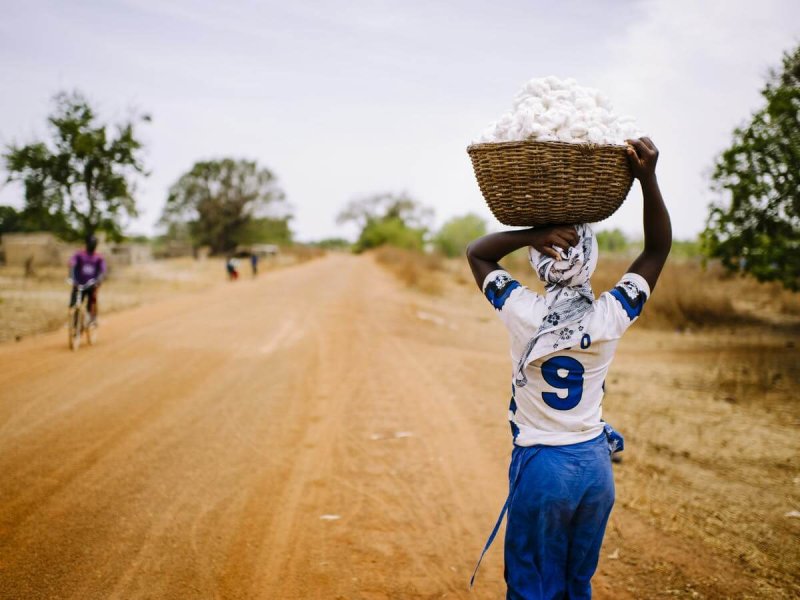Although acreage under GMO crop cultivation has expanded rapidly worldwide since GMOs first began to be grown in the mid to late 1990s, production remains highly concentrated in a handful of crops such as cotton, soybeans and corn which are grown in a few countries. Of the 190.4 million hectares (469.5 million acres) of GMO crops planted in 2019 for example, the US, Brazil, Argentina and Canada accounted for 84.5% of the total.
[Editor’s note: This is the first part of a two-part series. Read Part 2 here: Viewpoint: Which developing countries are taking the lead in crop biotechnology innovation?]
Most of the developing world has spurned the planting of GMO crops for a variety of reasons. First is their historical colonial links to countries in Europe, where GMOs are shunned because of a perception they are not “natural.” A reliance on the precautionary principle to prevent any possible risks to the health of humans and animals and the environment and active opposition by the influential organic food and anti-GMO lobby have also inhibited the development of GMO crops in Europe.
This reluctance of European nations to embrace GMOs has influenced developing countries, particularly as the EU is a major export market for many of them. The EU’s strict regulatory approval system and stringent labeling requirements clearly are an inhibiting factor restraining the development of GM crops in many developing nations.
In 2020, the European Academies Science Advisory Council noted:
The EU over-regulation of GMOs had negative impact on science and innovation in developing countries who feared for their export markets and who were inclined to look to the EU to express leadership in research and development.
Unlike the US, the EU does not encourage or promote the development of GMOs in its foreign assistance programs to developing countries. A FDA website entitled, “How GMO Crops Impact our World” for example specifically states, “The U.S. Agency for International Development (USAID) is working with partner countries to use genetic engineering to improve staple crops, the basic foods that make up a large portion of people’s diets.” The USDA also publishes annual agricultural biotechnology reports for many developing countries that track their receptiveness to developing GE crops.
Second, the antipathy of many major western NGOs such as Greenpeace and Friends of the Earth to GMOs has influenced many developing countries. Many of these NGOs have operations or affiliates or contribute money to NGOs in the developing world. As a result, many environmental and food NGOs in developing nations also vehemently oppose the development of GMO crops. They are following the lead of their counterparts in western nations. According to Greenpeace, one of the most influential environmental NGOs:
Genetically modified crops encourage corporate control of the food chain and pesticide-heavy industrial farming. GM plants can also contaminate other crops and lead to super weeds. This technology must be strictly controlled to protect our environment, farmers and independent science.
Finally, a paper published in Food and Chemical Toxicology by the French molecular biologist Gilles-Éric Séralini in 2012 that purported to link consumption of GMOs to cancer influenced many developing countries to restrict their development as it seemed to highlight the worst fears of the opponents of GMOs. Kenya for instance, imposed a strict import ban in 2012 on GMOs citing the Seralini study. Although the study was subsequently debunked and retracted, the damage was done. The discredited paper was nonetheless promoted by GMO opponents and the perception that GMOs were dangerous lingered on for many years.

In recent years however, it has become increasingly apparent to many developing nations that genetic engineering of crops can be an important tool in helping feed a growing population at a time of climate change and when urbanization and desertification are reducing the amount of land for farming. Without a more productive farming sector, many developing nations will face a rising food import bill because of a swelling population. This is in sharp contrast to the developed world, where the population is growing at a very marginal rate or is actually shrinking:
- Between 2021 and 2050, Japan’s population is expected to shrink form 126 million to 105.8 million, Germany’s will retreat from 83.9 million to 80.1 million and Italy’s will drop from 60.4 million to 54.4 million.
- Nigeria’s population, though, is expected to surge from 211.4 million to 401.3 million, Ethiopia’s will rise from 117.9 million to 205.4 million and the Philippines will see an increase from 111 million to 144.5 million.
As a result, it is imperative that many developing nations find a means of increasing their agricultural production, boost farm income and curb the cost of food imports. Genetic engineering offers that means.
This was Part One of a two-part post on the growing acceptance of GM foods and crops in the developing world. Part Two will review what specific actions countries are taking with certain foods.
Steven E. Cerier is a freelance international economist and a frequent contributor to the Genetic Literacy Project.































